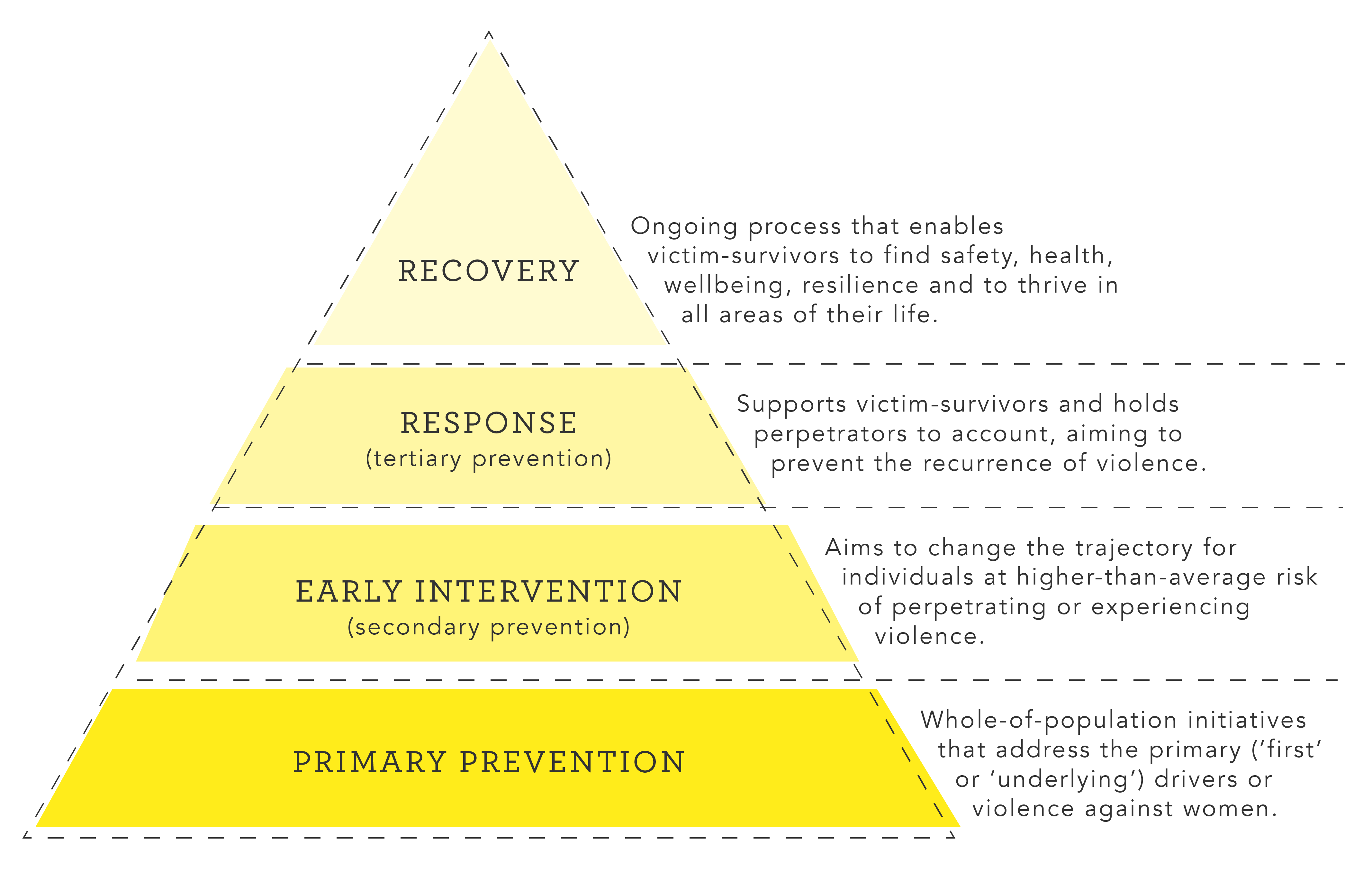
Preventing gendered violence: what we have learnt from young people
blog | Words Kaci Oliphant | 04 Jul 2023
As part of the WA government’s Family and Domestic Violence Primary Prevention Grants Program, Innovation Unit is running an exciting co-design project that takes a flexible and creative youth-focused approach to primary prevention of family and domestic violence.
We’ve recruited a group of young people to go through a co-design process and help us develop a creative intervention that addresses the underlying drivers of family and domestic violence.
What is primary prevention?
Primary prevention is about creating positive cultures where the risk of gendered violence doesn’t arise in the first place.
Primary prevention means addressing the underlying drivers of family and domestic violence by promoting gender equality. Moving even further upstream than early intervention work which might focus on recognising warning signs or ‘red flags’, primary prevention initiatives work with the whole population – not just those who are at greater risk of experiencing or perpetrating violence.
Primary prevention is long-term, complex work, and has the potential to make a huge impact toward ending men’s violence against women – but right now it’s under-resourced in most jurisdictions, including in WA. We welcome the state government’s support for primary prevention work with this round of funding, and hope to see more attention and resources in this space moving forward.
Working in the primary prevention space is difficult but necessary work – violence is preventable.

Why young people?
Evidence suggests that interventions targeted at shifting young people’s attitudes around gender and violence is one of the most effective forms of primary prevention
“Young people’s attitudes were identified as an area of concern in the national survey findings. Young people aged 16-24 had somewhat more violence-supportive attitudes than others, especially compared with their parents’ generation, and young men in particular were more likely to have a poor knowledge about violence and were less likely to support gender equality”Vic Health
2017
As we’ve worked with young people in our co-design team and in our workshops, we’ve learned three key lessons about primary prevention work with youth cohorts.
What are we learning:
INSIGHT 1:
A lot of primary prevention work is being delivered in ways that are not engaging to young people.
Traditional methods of targeting young people with primary prevention messaging have failed to engage young people in a way that creates lasting mindset and behavioural changes. We heard that methods such as ‘generic’ posters, ‘boring’ school presentations, and educational videos that ‘talk down’ to young people don’t connect and aren’t effective. Young people are telling us that we need to engage them in ways that are more personal, and which treat them as knowledgeable and trustworthy.
INSIGHT 2:
Young people might not be as good at ‘filtering’ their influences as they think they are.
In the era of influencers and with young people spending so much time online, it is important to understand how young people are filtering facts from #fakenews, and positive from negative identity cues.
While young people believe they’re able to ‘filter out’ negative aspects of the people or content they engage with online and pick and choose what they’re influenced by, it’s likely that unconscious bias continues to seep through and impact the attitudes that young people hold.
“One young man in a workshop, for example, told us that his favourite athlete had been arrested for domestic violence multiple times, but that he chooses to ignore this because it doesn’t take away from the athletes’ skills.”
INSIGHT 3:
Young people can find it difficult to make the connection between gender and violence, but it’s crucial for prevention.
Violence is a gendered issue, driven by factors such as rigid gender stereotypes, dominant forms of masculinity that emphasise aggression, dominance and control, and the condoning of violence at all levels.

However, in our engagements we noticed that young people can find it difficult to make connections between these gendered drivers and the violence they give rise to. Violence is not easily understood as a gendered issue, and bringing gender into conversations about violence can trigger resistance from young men in particular.
This project has been an interesting learning journey so far, one we are excited to be on. We are looking forward to taking these learnings and putting them into practice as we head into the development and deployment phase of our co-designed creative intervention.
If you would like to learn more about the FDV Primary Prevention Youth Co-Design Project, please contact Matt Berry (matthew.norman@
Read more about our work on Justice and Reducing Violence

In conversation: improving outcomes for care experienced people in prison
What can we learn about improving the prison system when we listen to people with professional and personal experience of care and custody?
01 Aug 22

Falling through the gaps – new research into care leavers’ experiences
A new research report reveals key insights about the experiences of care leavers leaving prison, and the opportunities and challenges they face following release.
28 Feb 19

Tackling youth violence, now young people are online more than ever
How can we use the COVID-19 crisis as an opportunity to reduce youth violence?
10 Jul 20